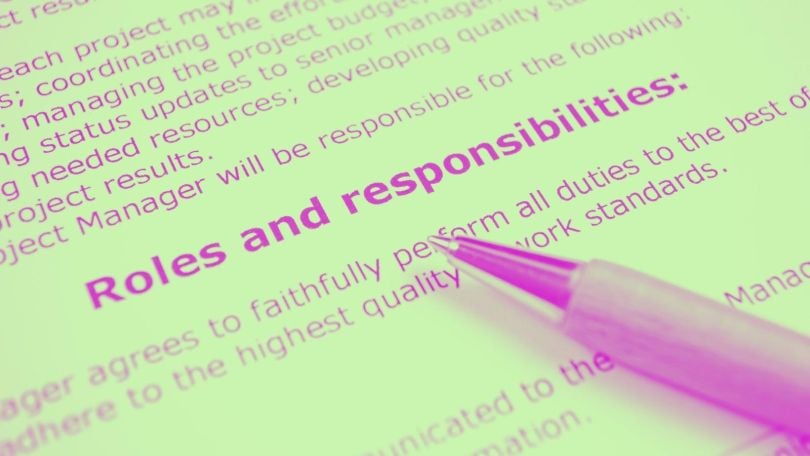How to Write a Job Description: Data-Driven Results

Job descriptions are the cornerstone of the recruiting process. They help to attract top talent, set expectations for qualified candidates, inform prospects about the role and company, and streamline the search process. Plus, a well-written job description gives companies a chance to make a great first impression. So while writing accurate and compelling job descriptions can be frustrating, finding the time and resources to do so is well worth it.

No matter how many job descriptions you write, they never seem to get any easier, especially if you are writing them for roles you know little about. We’re here to help. For starters, let’s discuss the importance of job descriptions, and then we’ll tackle how to write them.
Job descriptions are helpful for both prospective candidates and employers. Here’s why:
A concise and compelling job description will play a major role in attracting qualified candidates. With resources like LinkedIn, Facebook, Twitter and email, the ability to post and share jobs is instantaneous and has exponential reachability.
A clear job description will set everyone up for success. Prospects will understand what is expected of them, more-qualified candidates will apply, under-qualified applicants will move on and you will save loads of time sifting through applications and communicating with potential candidates.
A well-crafted job description can help both applicants and interviewers prep for the big day. Applicants will be able to prepare for likely topics of conversation and interview teams will be equipped to ask questions that will accurately gauge the candidate’s qualifications.
Job descriptions are often the first point of contact candidates will have with your company and can shape their first impression. Just like resumes and CVs, any jargon or grammatical errors will turn a candidate off and leave a lasting negative impression.
Searching for jobs is incredibly time-consuming, especially for the 73 percent of candidates who are passive and currently employed. Clear and concise job descriptions help prospects compare salaries, benefits, perks and even company culture to determine what roles are worth applying to.
Once a candidate is hired, the job description will stand as a baseline to measure growth, reference during performance reviews and consider future training opportunities.
Great job descriptions are thorough yet concise. They use specific terms and keep a professional tone. It’s OK to be a little quirky, but don’t overdo it. If you don’t take the job description seriously, top candidates will move on to other opportunities.
Here’s an outline of the main sections every job description should include.
Make the job title clear, concise and industry-specific.
43 percent of job seekers look for career opportunities on job boards that use search engine optimization (SEO) techniques. Job seekers are also likely to search based on the terms they know, so don’t stray from the standard industry language of common job titles. Be sure to include specific terms, like the programs required for the role. The title Lead Front End AngularJS Engineer is much more descriptive than Developer and will attract more qualified candidates. If your job can’t be found, it can’t be applied to.
Include a company description or mission, but keep it to about two to four sentences.
72 percent of job seekers noted they would be more likely to apply to a job posting with a company description. At the same time, don’t get too lost in the details. Most companies have a lengthy mission statement with core values and a culture code. For candidates looking at multiple companies and open roles, the missions start to sound the same. If candidates decide to pursue the position, they can read about the company’s full profile on the website.
Consider writing a templated version that can be repurposed whenever you need to write a new job post. It’s also more common to include the company description or mission at the beginning of the post.
Write a brief three to five sentence summary about what the candidate will do in their role, who they’ll work with and any general qualities your team is looking for in the individual.
90 percent of top-performing job descriptions include clear responsibilities and duties, according to Built In research. Responsibilities and duties are essential in order for a candidate to understand the role. They also set expectations for the hired employee and can be used as a baseline for performance reviews down the line.
Give five to 10 bullet points on what the candidate can expect to do in the role. Here are a few tips:
Job descriptions include an average of eight distinct qualifications per job post (including must-have and nice-to-have skills), according to Built In research. List five to seven bullet points that are absolutely necessary for a candidate to be successful in the role they are applying to.
If there are any other qualities that are nice to have, include those here. Don’t feel like you have to include this section, but it may help candidates know what to include in the application or interview to stand out. This section is lower priority and should have fewer bullet points.
61 percent consider compensation information to be the most important part of a job description. However, 99 percent of top-performing job descriptions don’t include compensation information, according to Built In research. Many companies still refuse to provide this information in job descriptions, but it’s time to get over this discomfort to garner a larger applicant pool.
It’s best to be upfront about the time frame you need employees to work. Flexible work hours are more common for full-time employees, time zones may play a role, and certain industries and markets work around different schedules.
Candidates will consider commute time or relocation efforts in their employment decision, so help them determine fit before they embark on the application process. Embedding a Google Map onto your website is really quite simple and can be done with this guide.
Keep working conditions and workplace expectations clear. People want to know what to expect in their future work environment. Are there any physical requirements for the role? What is the expected dress code?
Make sure it is blatantly obvious where a candidate is supposed to apply. Do not make it complicated or frustrating to apply because that’s just going to reduce your applicant pool for the wrong reasons. This is one area that companies should customize to the location the job is being posted. Make sure they know where to click or who to email to get the process started.
Most companies include an equal opportunity employer statement and that the employee may be required to perform additional job functions beyond the description. Do your research because disclaimers can help companies prevent serious lawsuits.
Some companies include additional details in their job descriptions to help differentiate them from other employers. There’s certainly a balance between writing a thorough job description and being excessive, and that’s up to your team to decide. Here are a few additional sections to consider including in your job description. While these items are optional, they may turn a good job description into a great one.
Non-financial benefits are often a deciding factor for prospective candidates — 61 percent of job seekers expect to see benefits packages in job descriptions, yet only 43 percent of top-performing job descriptions included such information, according to Built In research.
Things to include are your company’s:
Remember that perks are not the same thing as benefits. Perks are nice add-ons the company offers its employees to improve work-life balance and help them live happier, more productive lives.
Sure, it’s a buzzword, but the people have spoken and the best candidates expect a strong company culture. In fact, 47 percent say that company culture is the main reason they’re searching for new opportunities.
It’s best to keep your job description in the 250 to 500 word count range, as supported by a study that found the majority of job postings had a similar word count trend. Top-performing job descriptions contain an average word count of 457 words, based on Built In findings.
Average word count also correlates with average time on page for job descriptions. Job descriptions with a word count between 251 to 500 words see an average time on page of one minute and 39 seconds (1:39), which is closest to the average job description reading time of one minute and 41 seconds (1:41). It’s clear that job descriptions which adhere to word count best practices are much more engaging than their lower-performing counterparts.
16 percent of job descriptions as analyzed by Built In contain obvious typos, which could be detrimental to applicant reach and a company trustworthiness. Similar to how many recruiters disregard applicants with typos on their resume or application, candidates may come away with a negative impression of your company for not doing its due diligence. Remember to always have at least one other person read your job description before posting.
Job descriptions aren’t one-size-fits-all. While the company bio and mission statement sections may remain the same for each role a company posts, the main sections — which include role responsibilities and requirements — should be uniquely tailored to the job at hand.
For instance, a job description for a highly specialized role will usually go into more detail about the types of tools and software programs qualified candidates are expected to possess, while a JD for an entry-level role may spend more time broadly discussing the mentality or passions a candidate should have. In any case, job descriptions that have enough detail specific to the role gives job-seekers a better sense of the position and it gives you an opportunity to make a positive first impression.
Below we’ve rounded up some in-depth guides and job description templates for several roles:

